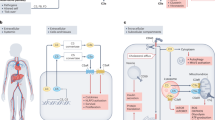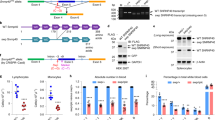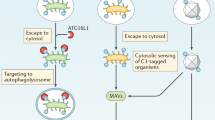Abstract
A genetic deficiency of the fifth (C5) component of complement1–3, a serum glycoprotein of molecular weight (MW) 220,000 (ref. 4), has been found in 39% of inbred strains of mice3. Sera of deficient mice lack detectable C5 activity and protein2,3. In addition deficient mice produce antibody to mouse C5 when injected with sera from C5 sufficient (normal) strains. Levy et al.5 showed that somatic cell hybrids between C5 deficient (B10.D2/old line) macrophages and either C5 sufficient (B10.D2/new line) mouse kidney or chicken erythroblasts secreted haemolytically active mouse C5 in vitro. Several possible molecular mechanisms to account for the findings were considered, but insufficient direct data were available to choose among them. We recently reported that mouse (CD.1 strain) peritoneal cells in culture synthesise and secrete a single chain precursor, pro-C5 (MW ∼ 210,000), of the two-chain (α chain, 125,000 and β chain 83,000 MW) C5 protein6. Radiolabelled precursor C5 was contained within the cells and was secreted into the tissue culture media. Using similar methods, we now find that C5 deficiency in each of five different mouse strains (AKR, SWR, DBA/2J, A/HeJ and B10.D2/old line) is due to a failure in secretion of C5 protein and not to a failure in biosynthesis of pro-C5.
This is a preview of subscription content, access via your institution
Access options
Subscribe to this journal
Receive 51 print issues and online access
$199.00 per year
only $3.90 per issue
Buy this article
- Purchase on Springer Link
- Instant access to full article PDF
Prices may be subject to local taxes which are calculated during checkout
Similar content being viewed by others
References
Rosenberg, L. T. & Tachibana, D. K. J. Immun. 89, 861–867 (1962).
Cinader, B. & Dubiski, S. Nature 202, 102–103 (1964).
Cinader, B., Dubiski, S. & Wardlaw, A. C. J. exp. Med. 120, 897–924 (1964).
Nilsson, U. R., Mandle, R. J. & McConnell-Mapes, J. A. J. Immun. 114, 815–822 (1975).
Levy, N. L. et al. Proc. natn. Acad. Sci. U.S.A. 70, 3125–3129 (1973).
Ooi, Y. M. & Colten, H. R. J. Immun. (in the press).
Hall, R. E. & Colten, H. R. Proc. natn. Acad. Sci. U.S.A. 74, 1707–1710 (1977).
Ciccimara, F. et al. J. clin. Invest. 57, 1386–1390 (1976).
Weitzman, S. & Scharft, M. D. J. molec. Biol. 102, 237–252 (1976).
Hickman, S. A. et al. J. biol. Chem. 252, 4402–4408 (1977).
Author information
Authors and Affiliations
Rights and permissions
About this article
Cite this article
Ooi, Y., Colten, H. Genetic defect in secretion of complement C5 in mice. Nature 282, 207–208 (1979). https://doi.org/10.1038/282207a0
Received:
Accepted:
Issue Date:
DOI: https://doi.org/10.1038/282207a0
This article is cited by
-
Screening of Streptococcus Suis serotype 2 resistance genes with GWAS and transcriptomic microarray analysis
BMC Genomics (2018)
-
Identification of a central role for complement in osteoarthritis
Nature Medicine (2011)
-
Gene expression profiling in a mouse model for African trypanosomiasis
Genes & Immunity (2006)
Comments
By submitting a comment you agree to abide by our Terms and Community Guidelines. If you find something abusive or that does not comply with our terms or guidelines please flag it as inappropriate.



